Diplodocus sale: Wyoming dinosaur skeleton in Sussex auction
- Published
Unearthed in the US, assembled in the Netherlands and on display in England - one of only six relatively complete diplodocus skeletons in the world is to be auctioned. But who buys a 17m (56ft) long dinosaur?
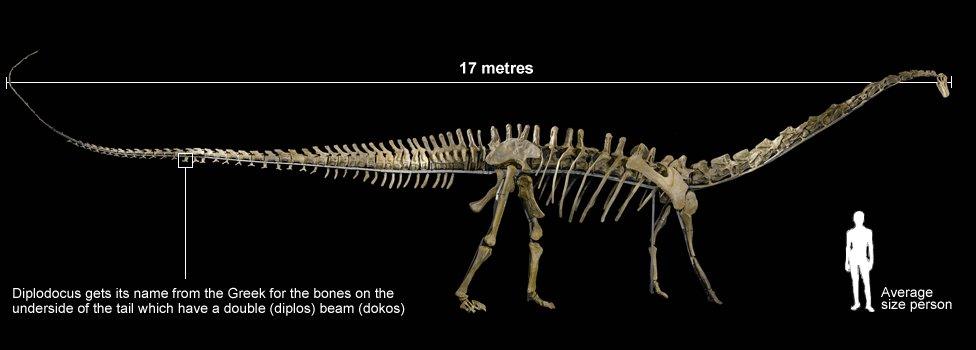
Watch footage of the Diplodocus skeleton being assembled
Sitting on his knees in a dusty quarry, renowned German palaeontologist Raimund Albersdoerfer chipped away at a dinosaur in the ground.
It was one of many he had found at the site in Wyoming and his two teenage sons had flown to the US to help him excavate it.
But instead of assisting, they became a distraction, pestering him to allow them to go off and discover their own fossils.
He relented and directed them towards an area where there might be a few interesting, yet worthless fragments. They returned with news.
They had unearthed a bone too big to carry.
All work at the main quarry stopped and attention turned to their find - the boys had discovered a diplodocus.
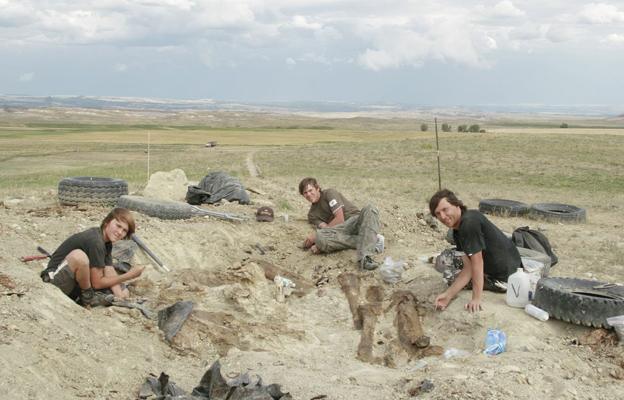
Raimund Albersdoerfer (right) and his two sons excavated the fossil in Wyoming
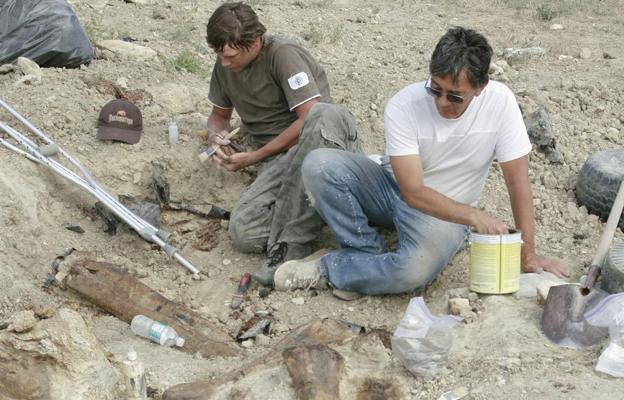
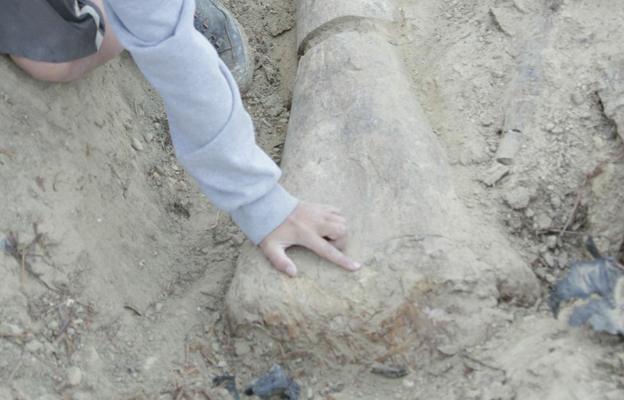
Misty, as she became known during the dig, is currently resting at an auction house in Sussex.
She is relatively complete, which is a rarity among dinosaur skeletons.
To put this in context, the famous diplodocus at the Natural History Museum in London is only a cast of one displayed in Pittsburgh.
And that dinosaur skeleton is itself made up of two different diplodocuses.
After the bones were conserved in the US, Misty was first taken to Rotterdam where she was initially assembled, with a frame being built for display. She was then taken to Summers Place Auctions, near Billingshurst in West Sussex.
But, with an estimated value of between £400,000 to £600,000, who will buy her?
"I usually say, 'every home should have one of these', but I'm not sure every home needs a diplodocus," said auctioneer James Rylands.
"It's more likely to be bought by a museum - most of the museums, including the Natural History Museum, only have replicas. And there's a fast developing museum market in Asia and the Middle East.
"The other big thing is upmarket shopping malls or hotels, especially in the US, because of their high ceilings and atriums. Within the context of a shopping mall you can make a real wow statement."
It took nine weeks for the diplodocus to be painstakingly dug out of the ground. Although commonly referred to as bones, fossils are actually made of stone.
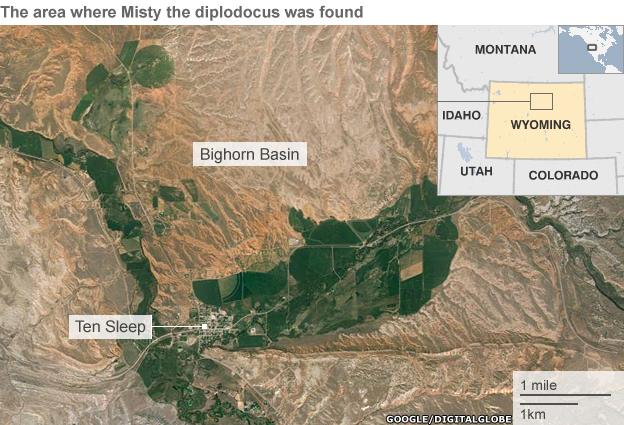
Errol Fuller, who is the auction's curator and was instrumental in bringing the dinosaur to England, said: "Fossil formation is like a magic act and I can well understand religious people who think God did it - it seems a perfectly acceptable explanation."
He said only six relatively complete skeletons exist elsewhere, mainly in the US and Middle East, and the rarity is due to bones being lost to scavengers or washed away by rain and rivers.
"To my knowledge it's the first time a large dinosaur skeleton has been auctioned in this country," he said.
"Part of the reason for it not being sold in the US is that Raimund is German and I think he felt that he wanted to sell it in Europe.
"And as it was discovered on private land and not federal land, he was allowed to remove it from the country.
"I'm sure the Americans are upset at losing it, but they already have two or three of them in collections."
Mr Fuller said the dinosaur came to England "by accident".
"I told Raimund - who I already knew - that I wanted to sell it in my auction," he said. "There's a certain amount of reason and a certain amount of chance as to why it's here."
Misty was assembled by Dutch "dinosaur builder" Aart Walen, who said arranging it in his laboratory proved to be difficult.
"[If I'm excavating a dinosaur] I know nearly each piece, from which dinosaur and which part of the body, but to get a bag [full of bones] is a nightmare," he said.
When shaping the long skeleton, he said he was anxious to try and give the creature life.
"It's stone, it's bones and it's 160 million years old," he said. "I've tried to make it alive by giving it movement and I gave it a swing in the body to see that it moves.
"It's a lady so I gave it a gentle movement."
The auction will take place on 27 November and is already attracting considerable interest. However, the Natural History Museum has ruled itself out of bidding for the skeleton.
Mr Fuller, who has written a book with Sir David Attenborough about birds of paradise, said natural history was "hot at the moment."
"People used to think fossils and stuffed animals were dusty old items from the past - not any more," he said.